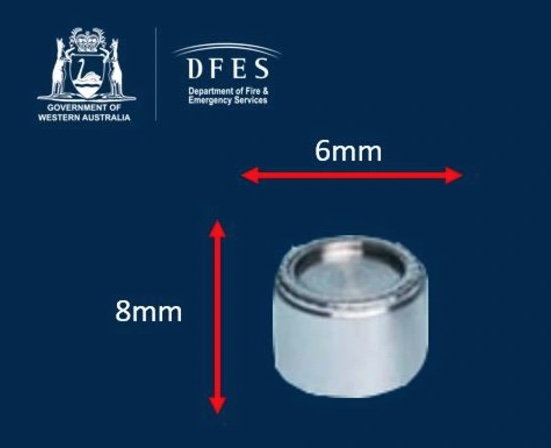A search team in Australia has found a tiny radioactive capsule that recently fell off a truck along an 870-mile (1,400-kilometer) stretch of road.
Likened to finding a needle in a haystack, the team spent days scouring a highway in Western Australia, performing a visual search and also using specialist equipment capable of detecting radiation.
The cesium-137 capsule, which is just 6 millimeters in diameter and 8 millimeters long, is believed to have fallen from the truck during a recent journey from a desert mine operated by Rio Tinto to a storage facility in the city of Perth.

Local news media reported that the capsule was found beside the road on Wednesday about 46 miles (74 kilometers) south of Newman on the Great Northern Highway, a relatively short distance from the mine where its journey began.
Such a capsule is commonly used within density gauges for mining work. This particular one began its journey supposedly securely fastened inside the truck, but it’s believed that vibrations during the long drive — equivalent to traveling from Los Angeles to Portland — caused it to come loose before falling through a gap in the vehicle and onto the road.
Although the incident took place between January 11 and January 16, it wasn’t until Wednesday last week that officials realized that the capsule was missing.
Following the find, Simon Trott, chief executive of mining firm Rio Tinto, said he was “incredibly grateful” for the effort made to locate the capsule, and apologized for the unfortunate episode.
“While the recovery of the capsule is a great testament to the skill and tenacity of the search team, the fact is it should never have been lost in the first place,” Trott said. “We are taking this incident very seriously and are undertaking a full and thorough investigation into how it happened.”
When news of the capsule’s disappearance emerged, members of the public were warned to stay well away from it should they come across it. Western Australia’s chief health officer said the capsule emits radiation equivalent to 10 X-rays in an hour. Contact with such a component can cause skin damage, burns, and radiation sickness, while long-term exposure could cause cancer.
The capsule was found well away from any communities, and officials are now checking the location to ensure there’s no damage to the immediate area or lasting environmental consequences.
Due to the bizarre nature of the incident, officials are also checking that strict protocols were properly followed for the packing and transportation of the radioactive capsule.
Editors' Recommendations
- Aussie authorities still searching for tiny radioactive capsule
- Australia says it found no evidence to suggest a TikTok ban is necessary


